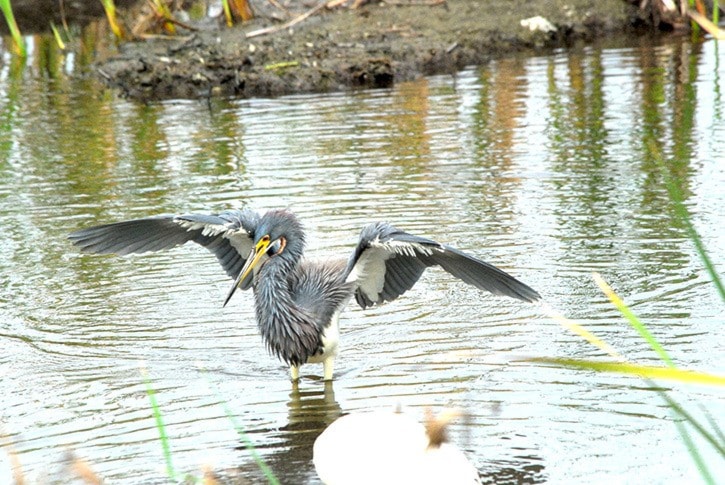A while ago I described the differences between some of the colourful southern flycatchers and their more northern, less colourful, cousins; today we’ll look at the heron family.
In B.C. we have just four species that breed in the province. Those are the wide-spread Great Blue Heron; the Green Heron which is primarily restricted to coastal regions; the Black-crowned Night-Heron, which is quite rare; and the American Bittern which is fairly widespread but very difficult to see due to its secretive habits.
Here is south Texas there are 12 regularly occurring species; all, except the American Bittern, also breed here. The Least Bittern is only half the size of the American Bittern but shares its northern relative’s secretive habits, thus making it a very difficult bird to see! Despite the time I’ve spent down here I’ve seen this bird only twice.
Egrets are in the heron family – there are four species in Texas: Cattle, Great, Snowy and Reddish Egret. The first three are pure white and can be distinguished only by size and the colour of their legs and bill. The Reddish Egret is largely grey in colour with a reddish head and neck.
The Great Egret and the Snowy Egret feed primarily in the water. They take a slow and stealthy approach to feeding. Standing very still or moving very slowly, they watch and wait for food to come within striking range. Cattle Egret feed largely on land. As their name suggests, they can often be seen feeding in fields with grazing animals. They seize insects scared up by the movement of large feet.
Reddish Egrets take an altogether different approach to hunting. They stand in shallow water with wings partially outstretched and dance around stirring up food. The first time I witnessed this performance I wondered if there was something wrong with the bird!
South Texas is also home to Great Blue Herons, Little Blue Herons, Green Herons and Tri-colored Herons. Great Blues have a more varied diet than others in their family. In addition to feeding in shallow water, they might also be seen feeding in grassy fields where they will eat insects, frogs, snakes and even small mammals. Tri-coloreds are a bit more active than some (although not as flamboyant as the Reddish Egret). I have watched them moving around in the water with their wings outstretched. It is thought that the wings put a shadow on the water and cut down on reflection and glare off the water making it easier to see prey below the surface.
The last two members of the family are the two Night-Herons: Yellow-crowned and Black-crowned. These species are nocturnal. They spend most of the day roosting in trees, then they fly out to feed around dusk. The Black-crowned is found throughout much of the United States and extreme southern Canada; the Yellow-crowned is restricted to the southern U.S.
Although not directly related to the herons, the very similar ibises and spoonbills also occur regularly here in the south. Together, that makes 15 species of long-legged wading birds feeding in the shallow waters of south Texas.
